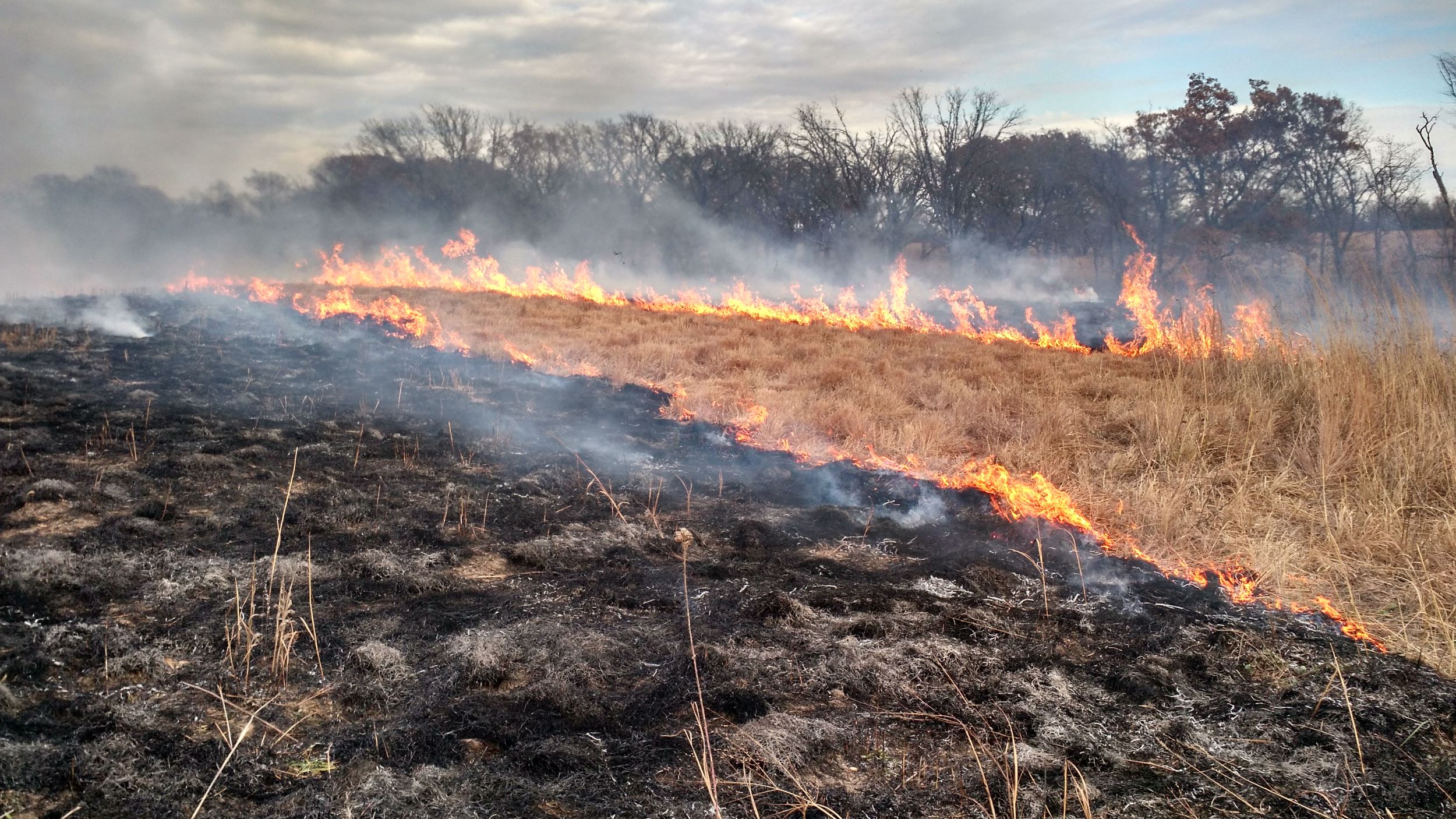Following Nature's Lead
By Ryan Schmidt, INHF Land Stewardship Director on January 31, 2018 in Blog Posts
In Iowa, landowners often associate prescribed burns with the arrival of spring (March – early May) when weather conditions tend to be favorable. But every so often, late fall – and even winter – offer an opportunity to get fire on the ground and increase diversity on the landscape.
The fall burn season is usually pretty narrow (late October – November), and the winter burn season in Iowa can be nonexistent. However, when the conditions are right, burning in the “off-season” can yield incredible results.
The Benefits of Burning in Fall and Winter
Wildfires were once an essential part of Iowa’s seasonal refresh, renewing native plants, containing woody vegetation and reinvigorating soils. Now, prescribed fire is one of the most effective land stewardship methods for achieving species diversity in prairie and woodland habitats.
When reintroducing a natural occurrence to the landscape, in this case fire, you want to try to mimic nature as best you can. Nature's fires have no consistent or regular schedule, therefore, INHF does its best to introduce fire at different times of the year.
Regular burning or burning of a particular piece of land at the same time of year over a long period of time may actually begin to change species' presence or abundance. Introducing fire at different times and varying your burn schedule helps recreate randomness and spurs greater species diversity. Achieving the greatest plant and animal diversity possible is of utmost importance to INHF. We do our best to consider all species in our approach to prescribed fire.
For landowners with large acreages or multiple tracts of land that would benefit from prescribed fire, winter burning also alleviates some of the pressure from your upcoming spring fire season.
Planning Your Burn

INHF conducted two burns this fall on November 15 and December 1, both at Snyder Heritage Farm, a 154-acre INHF-owned-and-managed nature preserve just north of Des Moines. Whether or not INHF will burn this winter will depend, as always, on the weather.
While INHF’s land stewardship team doesn’t count on fall and winter burning, we do want to be in a position to seize opportunities as they’re presented, and always have units ready to go. Having a plan in place well in advance of your burn – regardless of the time of year – will help ensure a successful burn.
Of course, each season of the year offers pros and cons in relation to prescribed fire and its effects on the land. If you're thinking about burning in the fall or winter, as always, take into account your long-term goals and objectives for your land. And remember: we're here to answer questions and offer advice.
For more information about prescribed fire, contact INHF Land Stewardship Director Ryan Schmidt at rschmidt@inhf.org or 515-288-1846, ext. 13.